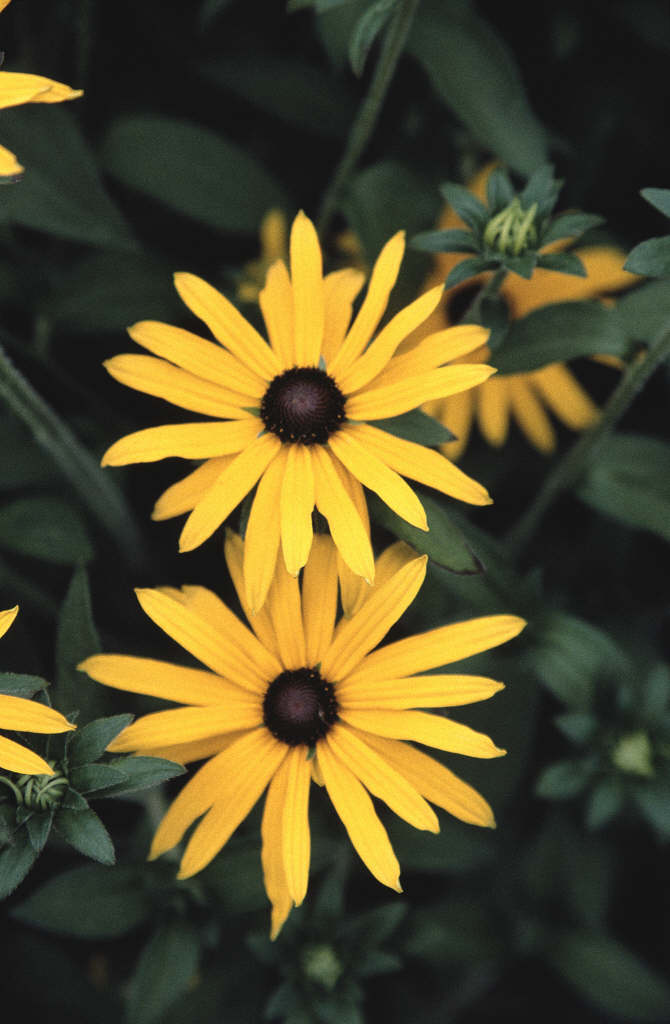Rudbeckia fulgida var. deamii

Deam's coneflower
A clump-forming, erect herbaceous perennial to 60cm, with densely hairy stems, and oval, dark green, roughly hairy serrated leaves. Black-eyed bright yellow daisies to 7cm in width are produced from late summer to mid autumn
Size
Ultimate height
0.5–1 metresTime to ultimate height
2–5 yearsUltimate spread
0.1–0.5 metresGrowing conditions
Moisture
Moist but well–drainedpH
Acid, Alkaline, NeutralColour & scent
| Stem | Flower | Foliage | Fruit | |
| Spring | Green | |||
|---|---|---|---|---|
| Summer | Yellow | Green | ||
| Autumn | Yellow | Green | ||
| Winter |
Position
- Full sun
- Partial shade
Aspect
East–facing or South–facing
Exposure
Exposed or Sheltered Hardiness
H6Botanical details
- Family
- Asteraceae
- Native to GB / Ireland
- No
- Foliage
- Deciduous
- Habit
- Clump forming
- Genus
Rudbeckia may be annuals, biennials or rhizomatous herbaceous perennials, with simple or pinnately divided leaves and large daisy-like flower-heads with yellow or orange rays surrounding a prominent conical disk
- Name status
Correct
- Plant range
- C USA
How to grow
Cultivation
Grow in humus rich, moist but well-drained soil in full sun or partial shade. Able to tolerate drought once established. See rudbeckia cultivation for further advice
Propagation
Propagate by seed in pots in a cold frame in early spring. Propagate by division in spring or autumn
Suggested planting locations and garden types
- City and courtyard gardens
- Coastal
- Cottage and informal garden
- Prairie planting
- Wildlife gardens
- Cut flowers
- Flower borders and beds
Pruning
Deadhead regularly. Can be cut back in autumn, though stems and seedheads persist well and can provide structure in winter
Pests
Diseases
Generally disease-free
Get involved
The Royal Horticultural Society is the UK’s leading gardening charity. We aim to enrich everyone’s life through plants, and make the UK a greener and more beautiful place.
